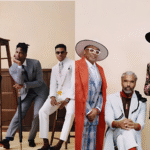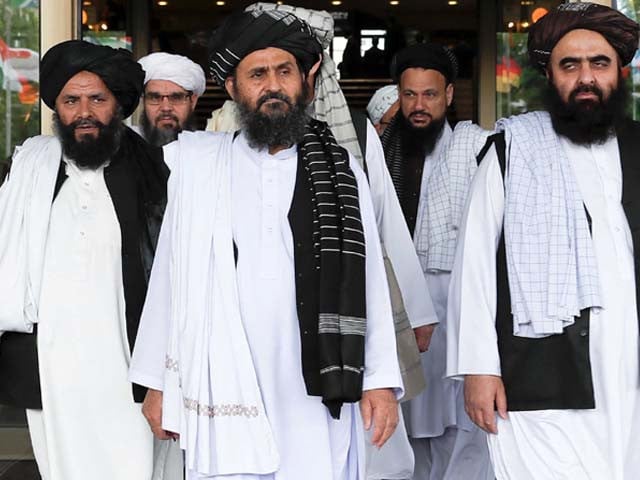The court led by Chief Justice John G. Roberts Jr. over the last two decades has not been known for its modesty or caution. Its signature move has been bold assertions of power backed by sweeping claims about the meaning of the Constitution.
It gutted campaign finance laws and the Voting Rights Act, overturned the constitutional right to abortion, did away with affirmative action in higher education and adopted a new interpretation of the Second Amendment that protects an individual’s right to own guns.
But as the first wave of challenges to President Trump’s blitz of executive orders has reached the justices, a very different portrait of the court is emerging. It has issued a series of narrow and legalistic rulings that seem calculated to avoid the larger issues presented by a president rapidly working to expand power and reshape government.
On Monday, the court ruled that Venezuelan migrants who challenged the administration’s plans to send them to a notorious prison in El Salvador had filed their lawsuits in the wrong court, without ruling on the underlying legal issues.
The justices’ new approach appears to have multiple goals: to stay out of the political fray, to maintain their legitimacy and, perhaps most important, to avoid a showdown with a president who has relentlessly challenged the legitimacy of the courts.
Mr. Trump, for his part, has called for the impeachment of judges who ruled against him and has suggested on social media that courts are powerless to tell him what to do. “He who saves his Country does not violate any Law,” he wrote.
The new cases have arrived on what critics call the court’s “shadow docket,” as emergency applications requiring the justices to move very quickly, on thin briefs and no oral arguments. The terse orders that follow typically decide whether to pause lower court rulings, themselves preliminary and tentative. It is understandable, then, that the justices may be reluctant to make grand pronouncements in that setting.
They have an alternative. They could choose to stay out of the way entirely and let appeals proceed in the usual way, at a stately place that would in the fullness of time produce lasting decisions.
Chief Justice Roberts is surely balancing a number of factors, including protecting his court’s legitimacy and authority, finding consensus where he can and affirming a robust vision of presidential power that must nonetheless abide by the rule of law.
Some of those calculations appeared to be at work last month, when the chief justice issued a statement reacting to calls from Mr. Trump and others to impeach Judge James E. Boasberg, who was handling the case on the Venezuelan migrants.
“For more than two centuries,” the chief justice said, “it has been established that impeachment is not an appropriate response to disagreement concerning a judicial decision. The normal appellate review process exists for that purpose.”
Justice Elena Kagan agreed, though perhaps not in the way the chief justice meant. In a dissent on Friday from an order letting the administration freeze teacher-training grants, she said the normal appellate process was better than quick rulings on emergency applications.
“The risk of error increases,” she wrote, “when this court decides cases — as here — with bare-bones briefing, no argument and scarce time for reflection.”
“There will of course be good-faith disagreements about when that is called for,” she added. “But in my view, nothing about this case demanded our immediate intervention. Rather than make new law on our emergency docket, we should have allowed the dispute to proceed in the ordinary way.”
Michael Dorf, a law professor at Cornell, said the administration’s litigation tactics encouraged “petty sticklerism” by the justices.
“In defending against the multitude of lawsuits challenging Trump administration actions, the Justice Department has frequently made nitpicky and dubious procedural objections,” he said. “The government says the plaintiffs filed in the wrong district, sought the wrong remedy, or sued the wrong official.”
Monday’s ruling that Venezuelan migrants should have brought their challenge in Texas rather than Washington, Professor Dorf said, “invites further chicanery from an administration that is acting in bad faith.”
But David A. Strauss, a law professor at the University of Chicago, said there was something to be said for judicial minimalism.
“There is a traditional idea that the court should avoid difficult issues if it can, even if that means deciding on highly technical or even questionable legal grounds,” he said, citing Justice Louis Brandeis’s statement that “the most important thing we do is not doing.”
“But the court has done something close to the opposite when it came to abortion, affirmative action, environmental protection, voting rights and Trump’s immunity from prosecution,” Professor Strauss said.
Challenges to initiatives from the second Trump administration have yielded five emergency rulings so far.
All of the majority opinions were unsigned, which is routine when the court rules on such applications. But that practice is open to question.
While serving on a federal appeals court in 1990, Justice Ruth Bader Ginsburg, who died in 2020, wrote that putting a name to an opinion “serves to hold the individual judge accountable” and “puts the judge’s conscience and reputation on the line.” The alternative, Thomas Jefferson wrote in 1822, “is certainly convenient for the lazy, the modest and the incompetent.”
In any event, the five orders said very little.
One ruled that a challenge to a trial judge’s order barring the firing of a government watchdog should be “held in abeyance.” Another instructed a judge who had told the administration to restore foreign aid to “clarify what obligations the government must fulfill.”
A third, allowing the administration to temporarily freeze teacher-training grants, relied on a mélange of laws and doctrines — the Administrative Procedure Act, sovereign immunity, the Tucker Act — to conclude that the challengers had most likely sued in the wrong court.
These were, Justice Ketanji Brown Jackson wrote in dissent, “ancillary threshold and remedial questions” that ducked the real one: Were the administration’s actions lawful?
There were large issues at play in the case of the Venezuelan migrants decided Monday, including the constitutionality and proper interpretation of the Alien Enemies Act of 1798, which grants the president authority to detain or deport citizens of enemy nations in times of war, and whether the migrants were in fact members of a gang the administration contends is covered by the act.
“We do not reach those arguments,” the majority said, ruling only that the migrants should have sued in Texas rather than Washington.
The majority added that the government had to allow the migrants a modicum of process, saying they must be told they are subject to deportation under the 1798 law. “The notice must be afforded within a reasonable time and in such a manner as will allow them to actually seek habeas relief in the proper venue before such removal occurs,” the majority wrote.
That was a concrete ruling, and it commanded nine votes. But Justice Sonia Sotomayor said in dissent that the whole enterprise was nevertheless flawed in light of the administration’s efforts to evade judicial review and its apparent disregard of a trial court’s order.
“The government’s conduct in this litigation poses an extraordinary threat to the rule of law,” she wrote. “That a majority of this court now rewards the government for its behavior with discretionary equitable relief is indefensible. We, as a nation and a court of law, should be better than this.”
The fifth order, on Tuesday, paused a trial judge’s ruling requiring the administration to reinstate fired workers on the ground that the challengers lacked standing to sue.
Several of the court’s actions have been closely divided, turning on the votes of the two justices at its ideological center: Chief Justice Roberts and Justice Amy Coney Barrett. The two did not outline their thinking in every case.
Friday’s order on grants to teachers noted that Chief Justice Roberts dissented. He did not provide a reason.
In Monday’s order on the Venezuelan migrants, Justices Kagan and Jackson joined all of Justice Sotomayor’s dissent. Justice Barrett, by contrast, joined small slices of it and did not explain why.
In her own dissent in the case of the migrants, Justice Jackson said that one of the court’s darkest moments, its 1944 decision in Korematsu v. United States, in some ways compared favorably to Monday’s ruling.
That decision endorsed an executive order that required 110,000 Americans of Japanese ancestry to be removed from their homes and confined in detention camps. The court relied on wartime hysteria streaked with racism, sullying its reputation and damaging the constitutional principles it was meant to uphold.
In 2018, in upholding President Trump’s ban on travel from several predominantly Muslim countries, Chief Justice Roberts addressed the decision in his majority opinion. “Korematsu was gravely wrong the day it was decided,” he wrote, adding that it “has been overruled in the court of history.”
But Justice Jackson wrote Monday that there was something to be said for how the court had acted in deciding Korematsu, as compared to the current moment.
“At least when the court went off base in the past, it left a record so posterity could see how it went wrong,” she wrote. “With more and more of our most significant rulings taking place in the shadows of our emergency docket, today’s court leaves less and less of a trace.”
#Trump #Cases #Supreme #Court #Retreats #Confrontation










